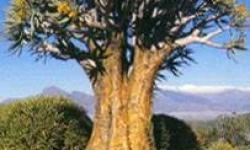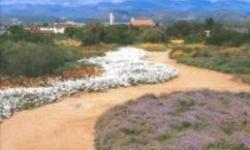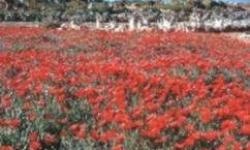Karoo Desert National Botanical Garden, Worcester, South Africa, falls within the succulent karoo biome, which includes the Namaqualand flora so famous for its spring flowers, the Garden boasts some 400 naturally occurring species. The garden is also a haven for rare and endangered plants, with over 300 species being protected and propagated. Almost 70 species of birds have been recorded in the Garden, as well as a wide range of small mammals, such as the Cape grey duiker.
Approximately 11 hectares of the estate are cultivated, whilst the remaining 144 are kept as a flora reserve which has several kilometres of nature trails.
Facilities for physically challenged persons:
A wheelchair is available on request, from the admin. office. The main circular route is wheelchair friendly and so are some of the shale pathways. Thus about 50% of cultivated garden is wheelchair friendly. About 80% of the plant sales area is wheelchair friendly. The Kokerboom restaurant is completely wheelchair friendly and there is a toilet for physically challenged persons. Unfortunately the toilets in the garden are not wheelchair friendly, please use the restaurant facilities. We have a braille trail of 1000m.
Karoo Desert National Botanical Garden, Worcester, South Africa, also offers:
Khoisan kookskerm - An ethnobotanical garden displaying plants used by the people of Namaqualand.
Organised tours - Tours of the succulent collections are available by special arrangement.
Plant Maze - Porkwood Plant Maze
Plant sales - There is a well-stocked nursery with over 500 indigenous species and seed of over 200 indigenous species.
Shop - Botanical books, seed and curios.
Trails - Braille Trail, just under 1 km with information boards in Braille. Karoo Trail, illustrating the fascinating regions of the Karoo, such as the Little Karoo, Great Karoo and Hantam Karoo. Shale Trail, approximately 1,7 km in the natural karroid koppies and illustrated with information boards.



Karoo Desert National Botanical Garden reviews
Login to comment